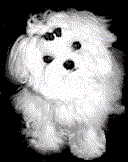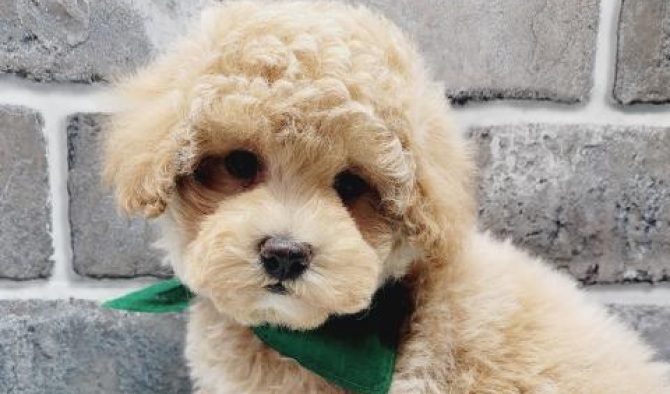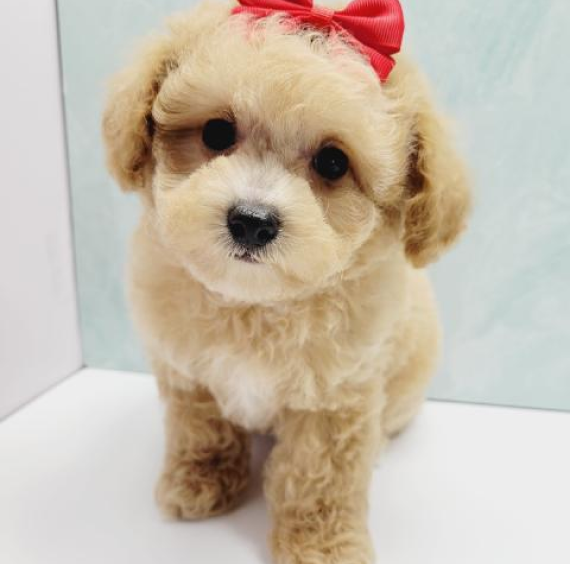

- Phone
- Email puppypetite@aol.com
-
Address
8002 17th Ave, Brooklyn NY 11214

Potty Training Methods In Potty Training Your Poodle Puppy
Poodles are a highly coveted breed of puppies, renowned for their intelligence, elegance and sociable nature. Their unique aesthetic appeal combined with their innate charm makes them an excellent choice for a family pet.
Poodles are distinguished by their intricate, curly fur that requires regular grooming to maintain its look. One of the most outstanding characteristics of Poodles is their high intelligence, which makes them easy to train and adept at picking up new commands and tricks. They are known for their agility and grace, often performing well in dog sports and competitions. Poodles are also fairly active and enjoy regular exercise and playtime. Despite their luxurious appearance, Poodles are quite sturdy and durable, and can adapt to a variety of living environments.
Poodles are not only beautiful and intelligent, but they also possess a friendly and loving demeanor. They form strong bonds with their human companions and display a high degree of loyalty. This breed is also known for its sociability, often getting along well with other pets and children.
Poodles are an ideal breed for those seeking a smart, active, and affectionate pet. Their elegant appearance and charming personality, combined with their adaptability and intelligence, make them a perfect addition to any family.


Potty Training Methods
Potty training is a crucial part of raising a happy and healthy poodle. Having a well-trained dog not only makes the owner's life more comfortable, but it also contributes to the dog's overall wellbeing. This section will discuss several effective potty training methods for poodles.
- Crate Training: This method involves keeping the poodle in a crate during times when you cannot directly supervise them. As dogs do not like to soil their sleeping areas, the poodle will learn to hold it in until they are let out to do their business in the appropriate place.
- Paper Training: This involves placing newspapers or special puppy pads in a designated area of the house for the poodle to relieve themselves. Over time, the poodle learns to go to this same spot when they need to go.
- Scheduled Training: This method involves taking the poodle outside to do their business at regular intervals, such as after meals, first thing in the morning, and before bedtime. The idea is to form a consistent routine, helping the poodle understand when and where to eliminate.
- Reward-Based Training: Every time the poodle relieves themselves in the desired location, they receive a reward, usually in the form of a treat. This positive reinforcement encourages them to repeat the correct behavior.
Remember, each poodle is unique, and what works best may depend on the individual dog's temperament and the owner's lifestyle. Have patience and maintain consistency, and your poodle will be potty trained successfully. Once this training is complete, it makes for a more harmonious relationship between the poodle and its owner, leading to a happy and fulfilling companionship.

Recognizing Signs of Needing to Go
Recognizing when your poodle needs to go is a crucial aspect of potty training. Here are some common signs that your poodle may need to relieve themselves:
- Increased Activity: If your poodle suddenly starts to pace, whine, or act anxious, it may be a sign that they need to go.
- Sniffing Around: Dogs often sniff around to find the perfect spot to do their business. If your poodle starts sniffing the floor or ground excessively, it's likely they need to go.
- Going to the Door: If a poodle is trained to go outside, they may sit or scratch at the door when they need to go out.
- Circling: Poodles may start to circle in one spot when they're about to go.
- Changes in Posture: Changes in your poodle's posture can also be a sign. If they suddenly stand with their back hunched or start squatting, it's time to rush them to their designated potty area.
Remember, the signs may vary from one dog to another, and it's important to spend enough time with your poodle to understand their specific cues. Effective potty training is a matter of communication between you and your poodle. With time and patience, you'll be able to understand their signals and provide them with the comfort of timely bathroom breaks.
The Right Way to Take Your Poodle Puppy Out
Remember, taking your poodle puppy out for bathroom breaks and walks is an integral part of their training and development. It helps in reinforcing their potty training, ensures they get regular exercise, and provides a valuable opportunity for them to explore and interact with their environment. Below are a few reminders as to why and how to do it in the right way:
- Establish a Routine: Regularity is key when it comes to potty training. Taking your poodle out at the same time each day helps them understand when it's time to do their business. This consistency encourages a smooth and successful potty-training process.
- Use a Leash: Always use a leash when taking your poodle puppy out. This ensures their safety and keeps them close to you at all times. Using a leash also gives you control over where they go and helps to discourage distractions.
- Choose a Specific Spot: Consistency in location can help your puppy understand faster where they're supposed to do their business. Choose a specific spot and always guide your poodle to this place during the initial stages of potty training.
- Stay Patient: Understanding and patience are crucial during this process. If your poodle makes a mistake, don't get angry or frustrated. Instead, calmly redirect them to the correct spot.
- Give Rewards: Positive reinforcement plays a significant role in training. Reward your puppy with a treat or praise whenever they do their business in the right place.
- Clean Up After Your Puppy: This is not only a responsible thing to do but also prevents your poodle from getting used to the smell and wanting to go in the same incorrect location again.
In conclusion, taking your poodle puppy out the right way involves consistency, patience, and positive reinforcement. Keep in mind that each puppy is unique and what might work for one might not necessarily work for another. However, by adhering to the reminders listed above, you'll create a successful and stress-free potty training experience for both you and your poodle. This will help establish a strong and positive bond between you and your pet, enhancing the overall joyful experience of raising a poodle.
